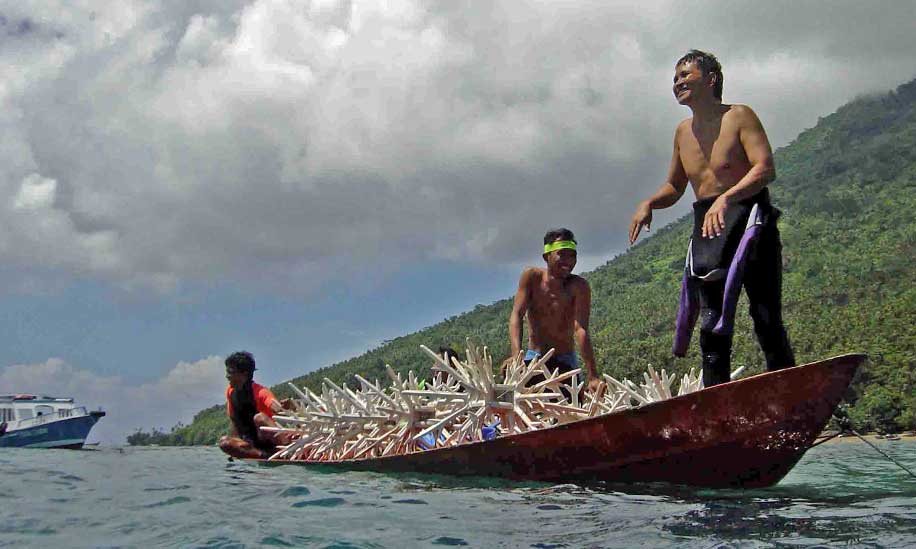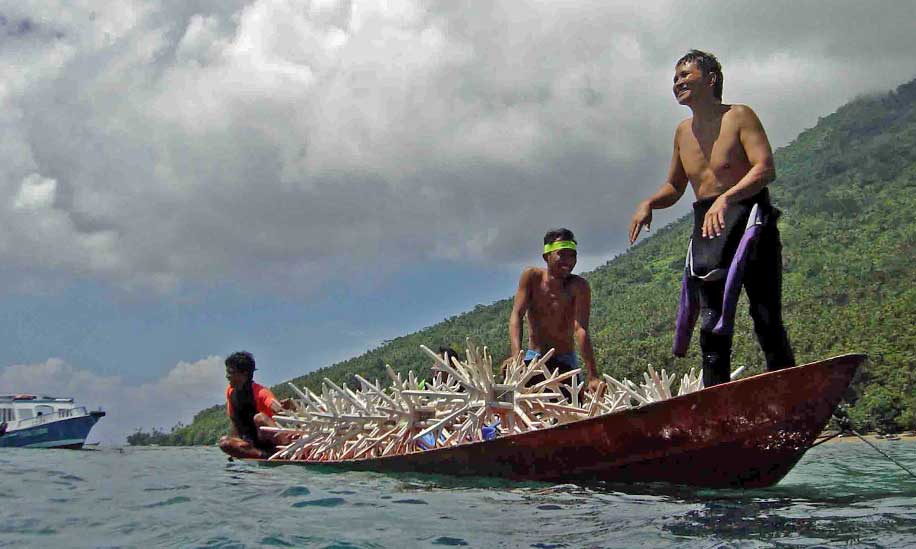Manado Tua Island is a towering extinct volcano fringed with picturesque reef drop-offs and capped with a rainforest at its summit. The island’s 3,200 inhabitants form a tightly knit community of farmers and fishermen who cling tenaciously to their Sangir cultural traditions. Blast fishing, however, reduced large sections of Manado Tua’s coral reef to rubble more than a decade ago.
With Seacology’s help, Manado Tua villagers have installed EcoReef modules, snowflake-shaped ceramic modules that are designed to mimic branching corals. They provide shelter to fish and a surface for larval corals to build a new reef. In return, villagers have expanded their current no-take reef zones to include five acres of reef containing the EcoReef modules. USAID’s Natural Resources Management Project and dive operators from the North Sulawesi Watersports Association coordinated the project.



